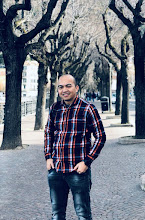There’re few islands at Thousand Island managed to be resort island or tourism island that are equipped with complete facilities.
Ayer Island
The width of Ayer Island is 6,5ha. Transit time to reach Ayer Island from Marina Ancol is about 25 minutes. Ayer Island is popular with its floating cottage that is designed with Asmat (an ethnic from Papua) ethnical characteristic. There’re 41 cottages and four lodges equipped with play ground for children, bar, restaurant, karaoke and discotheque.
Reservation office of Ayer Island:
PT Global Eka Buana
Jl. KH. Samanhudi No. 47 – 49
Jakarta Barat
Phone: 021 - 385 2004, 385 2033
Fax: 021 - 385 2046
Bidadari Island
The land’s width of Bidadari Island is 6,03ha. Bidadari Island can be reached in 20 minutes by riding speedboat from Marina Ancol. Bidadari Island has beautiful beach with white sands spread out over it. You can see the excess of Dutch colonial forth that’s still equipped with old cannon and inscriptions in Bidadari Island..
Reservation office of Bidadari Island:
PT Seabreez Indonesia
Jl. Lodan Raya No. 103
Jakarta Utara
Phone: 021 - 647 1173, 647 10048
Fax: 021 - 641 3680
Kotok Island
Kotok Island has beautiful white sand beach and charming underwater panorama as well as protected Bondol Eagle habitat. Kotok Island offering the tourist with snorkeling, scuba diving and canoeing facilities.
Reservation office of Kotok Island:
PT Kotok Wietasha Indah
Jl. Cempaka Putih Tengah No. 34/AI
Jakarta Pusat
Phone: 021 - 428 01932
Putri Island
The width of Putri Island is about 8,29ha. Putri Island is offering tourist the beauty of its underwater habitat, supported by touring facilities like glass bottom and undersea aquarium. Putri Island has 71 cottage to support tourist who wants to stay there.
Reservation office of Putri Island:
PT Buana Bintang Samudera
Jl. Sultan Agung No. 21
Jakarta Selatan
Phone: 021 - 830 5879, 830 5877
Fax: 021 - 829 9002
Pantara Island
Pantara Island divided into two islands, there are West Pantara with 34 cottages and East Pantara with 56 cottages. Pantara Island counts on its clear water and beautiful coral island to be offered to tourists. It’s very interesting to do scuba diving in Pantara Island.
Reservation office of Pantara Island:
PT Pantara Wisata Jaya
Jl. Pangeran Jayakarta No. 115
Kompleks Ruko Blok B No. 13 - 14
Jakarta Utara
Phone: 021 - 626 2612, 626 2629
Fax: 021 - 626 2627
Sepa Island
Sepa Island has beautiful beach with white sand. There are 43 cottages of various types in Sepa Island. You can also see corals and the conservation of turtle shell in Sepa Island.
Reservation office of Sepa Island:
PT Pulau Sepa Permai
Jl. Kyai Caringin No. 20A
Jakarta Pusat
Phone: 021 - 629 8828, 638 63477
Fax: 021 - 638 63478
Read more...

